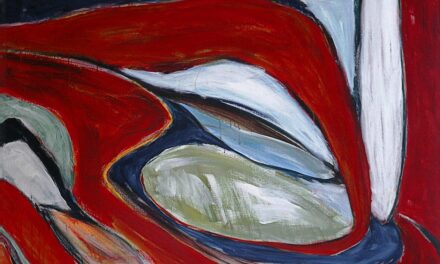Paul Cézanne was born on 19 January 1839 in Aix-en-Provence, France. He was the son of a wealthy banker, whilst his mother was a homemaker. Cézanne exhibited an early interest in art and drawing, and his father supported this passion by providing him with art supplies and enrolling him in drawing classes.
In 1858, Cézanne relocated to Paris to pursue a career in art, contrary to his father’s wishes. He enrolled in the Académie Suisse and became acquainted with fellow artists such as Camille Pissarro and Claude Monet, who would later become influential figures in his artistic development. Cézanne’s early education in art was heavily influenced by the works of the old masters, particularly those of the Italian Renaissance.
He devoted considerable time to studying and copying their works, developing a profound appreciation for their use of light, form, and composition. This early exposure to classical art would later inform his own artistic style and approach to painting. Cézanne’s education also included a brief period at the École des Beaux-Arts, where he studied under the academic painter Charles Gleyre.
However, he swiftly grew disillusioned with the traditional teaching methods and sought to develop his own unique style outside the confines of academic art. This rebellious spirit would come to define his artistic career and distinguish him from his contemporaries.
Summary
- Cézanne was born in Aix-en-Provence, France in 1839 and showed an early interest in art, attending the Free Municipal School of Drawing in his youth.
- He was heavily influenced by the Impressionist movement and developed his own unique style, using geometric shapes and exploring the effects of light and colour in his work.
- Cézanne’s innovative approach to composition and form had a profound impact on modern art, laying the groundwork for the development of Cubism and abstract art.
- Some of his most famous works include “The Bathers” and “Mont Sainte-Victoire”, and his legacy continues to inspire artists and art enthusiasts around the world.
- Cézanne was known for being reclusive and dedicated to his work, often painting the same subjects repeatedly, and he had a complex relationship with his family and fellow artists.
- He received little recognition during his lifetime, but posthumously became known as one of the most influential artists of the 19th century, with his work being exhibited and celebrated globally.
- Cézanne’s revolutionary approach to art continues to influence contemporary artists, with his emphasis on structure, form, and the perception of space resonating in the work of artists across various mediums.
Artistic Influences and Style
Influence of Impressionism
However, Cézanne’s approach to painting was distinct from that of the Impressionists, as he sought to move beyond mere visual representation and capture the underlying structure and form of his subjects.
A Unique Style Emerges
This led him to develop a unique style that would later be regarded as a precursor to Cubism and other modern art movements. One of Cézanne’s most distinctive artistic influences was his fascination with nature and the landscape of his native Provence. He spent much of his career painting en plein air, capturing the rugged beauty of the French countryside in his work.
Capturing the Essence of Nature
His use of bold colours and dynamic brushwork conveyed a sense of vitality and movement, while his keen observation of form and structure gave his paintings a sense of solidity and depth. Cézanne’s unique approach to capturing the essence of nature would go on to inspire generations of artists and cement his legacy as a pioneering figure in modern art.
Impact on Modern Art

Cézanne’s impact on modern art cannot be overstated. His innovative approach to painting laid the groundwork for many of the major art movements of the 20th century, including Cubism, Fauvism, and even Abstract Expressionism. His emphasis on form and structure over mere visual representation paved the way for artists such as Pablo Picasso and Georges Braque to break free from traditional modes of representation and explore new ways of depicting the world around them.
Cézanne’s influence on modern art extended beyond his technical innovations. His commitment to exploring the underlying structure of his subjects and his rejection of traditional artistic conventions inspired a new generation of artists to push the boundaries of what was considered acceptable in art. His willingness to challenge the status quo and forge his own path set a precedent for artists to follow their own creative instincts and pursue their unique vision, regardless of prevailing artistic trends.
Famous Works and Legacy
Cézanne’s body of work includes some of the most iconic paintings in the history of art. His still lifes, such as “The Basket of Apples” and “The Card Players,” are celebrated for their masterful use of colour and composition, as well as their ability to capture the essence of everyday objects with a sense of timelessness. His landscapes, such as “Mont Sainte-Victoire” and “The Bathers,” are revered for their bold use of colour and dynamic brushwork, which convey a sense of movement and vitality.
Cézanne’s legacy as an artist is far-reaching. His innovative approach to painting laid the groundwork for many of the major art movements of the 20th century, including Cubism, Fauvism, and even Abstract Expressionism. His emphasis on form and structure over mere visual representation paved the way for artists such as Pablo Picasso and Georges Braque to break free from traditional modes of representation and explore new ways of depicting the world around them.
Personal Life and Relationships
Despite his groundbreaking contributions to the world of art, Cézanne led a relatively private personal life. He was known for being reclusive and introverted, preferring to spend his time painting rather than socialising with others. Cézanne was also known for his tumultuous relationship with his father, who disapproved of his decision to pursue a career in art.
This strained relationship had a lasting impact on Cézanne’s personal life and may have contributed to his reclusive nature. Cézanne’s personal life was also marked by his long-term relationship with Hortense Fiquet, whom he met in Paris in the 1860s. The couple had a tumultuous relationship, marked by periods of separation and reconciliation.
They eventually married in 1886, after nearly two decades together. Despite their rocky relationship, Fiquet served as a model for many of Cézanne’s paintings, including some of his most famous works.
Recognition and Achievements

Breaking Through with a Solo Exhibition
In 1895, Cézanne had his first major solo exhibition at Ambroise Vollard’s gallery in Paris, which helped to raise his profile in the art world. This exhibition marked a turning point in Cézanne’s career, as it brought him greater recognition and acclaim from critics and fellow artists alike.
A Humble Artist to the End
Despite this newfound recognition, Cézanne remained humble and dedicated to his craft until his death in 1906. His perseverance and commitment to his art have inspired generations of artists, cementing his legacy as one of the most influential artists of all time.
A Lasting Legacy
Today, Cézanne’s work is celebrated for its innovative style and profound impact on the development of modern art. His paintings continue to inspire and influence artists, ensuring that his contributions to the world of art will never be forgotten.
Cézanne’s Influence on Contemporary Artists
Cézanne’s influence on contemporary artists is profound and far-reaching. His innovative approach to painting laid the groundwork for many of the major art movements of the 20th century, including Cubism, Fauvism, and even Abstract Expressionism. His emphasis on form and structure over mere visual representation paved the way for artists such as Pablo Picasso and Georges Braque to break free from traditional modes of representation and explore new ways of depicting the world around them.
Contemporary artists continue to draw inspiration from Cézanne’s work, particularly his use of colour, composition, and brushwork. His commitment to pushing the boundaries of what was considered acceptable in art has inspired a new generation of artists to follow their own creative instincts and pursue their unique vision, regardless of prevailing artistic trends. Cézanne’s legacy as a pioneering figure in modern art continues to resonate with artists around the world, cementing his status as one of the most influential artists in history.
If you are interested in learning more about the art movement that followed Impressionism, you should check out the article on Post-Impressionism on Thinkofart.com. This article delves into the work of artists like Paul Cézanne, Vincent van Gogh, and Georges Seurat, who built upon the techniques and ideas of the Impressionists to create their own unique styles. Click here to read more about Post-Impressionism.
FAQs
Who was Paul Cézanne?
Paul Cézanne was a French artist and Post-Impressionist painter, born on January 19, 1839, in Aix-en-Provence, France. He is known for his innovative painting techniques and his influence on 20th-century art.
What is Paul Cézanne known for?
Paul Cézanne is known for his unique approach to painting, which bridged the gap between 19th-century Impressionism and 20th-century Cubism. He is celebrated for his use of geometric forms and his exploration of colour and light.
What are some of Paul Cézanne’s most famous works?
Some of Paul Cézanne’s most famous works include “The Bathers,” “Mont Sainte-Victoire,” “Still Life with Apples,” and “The Card Players.” These paintings are renowned for their innovative composition and use of colour.
How did Paul Cézanne influence modern art?
Paul Cézanne’s approach to painting had a profound impact on modern art. His use of geometric forms and his emphasis on structure and composition laid the groundwork for the development of Cubism and other 20th-century art movements.
What was Paul Cézanne’s artistic style?
Paul Cézanne’s artistic style is often described as a bridge between Impressionism and Cubism. He was known for his use of short, hatched brushstrokes, his exploration of colour and light, and his innovative approach to composition.




